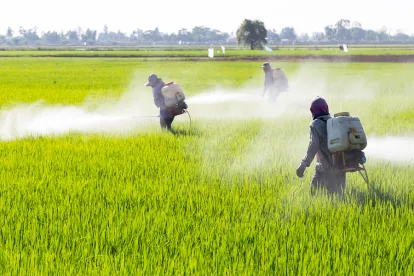On March 12, 2020, the U.S. Environmental Protection Agency (EPA) announced the publication of its Revised Method for National Level Listed Species Biological Evaluations of Conventional Pesticides (Revised Method), a method for conducting Biological Evaluations under the Endangered Species Act (ESA).
The Revised Method will be used by EPA to evaluate potential risks from pesticides to federally listed endangered and threatened species and to make effects determinations during initial registration and as part of periodic registration review. The Revised Method allows EPA to include historical usage data that reflects where and how certain pesticides have been applied to make predictions about the future.
The Revised Method includes a three-step process to identify and evaluate the potential risk to endangered species by the assessed pesticide:
| Topic | Step 1 | Step 2 | Step 3 |
| Assessment | Biological Evaluation | Biological Evaluation | Biological Opinion |
| Scale | Individual and Field | Individual and Field/Landscape/Watershed1 | Population and Landscape/Watershed |
| Determination | No Effect/May Affect | Not Likely to Adversely Affect/Likely to Adversely Affect | No Jeopardy/Jeopardy2 |
1 Although Step 2 is conducted at an individual level, consideration is given to the likelihood that an exposure and effect will occur. This step considers the proportion exposed across the landscape/watershed and the distribution of exposure among individuals.
2 This is the determination for listed species. The determination for designated critical habitats is “No Adverse Modification/Adverse Modification.”
EPA Administrator Andrew Wheeler stated: “EPA’s improved methodology will better protect and promote the recovery of endangered species while ensuring pesticide registration review decisions are conducted in a timely, transparent manner and are based on the best available science.”
EPA has also released for public comment draft Biological Evaluations for carbaryl and methomyl, which were conducted using the final Revised Method. If EPA determines a pesticide may affect a listed species or its critical habitat, it must consult with the Fish and Wildlife Service and the National Marine Fisheries Service (the Services). The Services will then issue a Biological Opinion to determine if the population of a species would be adversely impacted and, if so, propose ways to reduce risks.
Comments on the draft Biological Evaluations are due on or before May 18, 2020. The public can submit comments at www.regulations.gov in Docket Number EPA-HQ-OPP-2020-0090.
Commentary
Critics of the new method for doing Biological Evaluations have alleged that the purpose of the changes in this method, and of other recent revisions in ESA procedures, is to reduce the number of formal consultations that must be conducted with the Services. Such allegations must be evaluated in the context of the severe bottlenecks in the current consultation process created by the limited resources and personnel that are available at the Services to conduct any required consultations and to prepare formal Biological Opinions. The EPA method for doing Biological Evaluations has always been intended to use worst case assumptions to quickly remove from consideration those pesticides that are unlikely to pose any potential risk to endangered and threatened species, so that the limited resources available for the more extensive assessment triggered by consultation are used efficiently to address the most significant potential hazards. Worst case assumptions, however, exaggerate the “reasonable worst case” and other more realistic scenarios. Given the reality of limited review resources, focus on more uncertain risks draws resources away from attention on more certain risks to species. Eventually the assessment system is expected to include other techniques (example: use of probabilistic models) to refine the analyses to concentrate further regulatory options on the most effective ways to protect species.
The draft BE for carbaryl and methomyl are available here and here.




 />i
/>i
